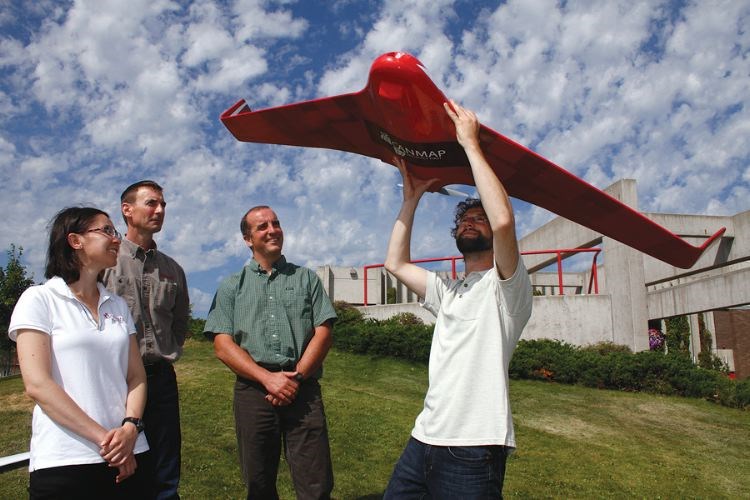When it comes to taking inventory of a forest, John Rankin believes drone aircraft equipped with high resolution cameras are the wave of the future and, with the help of CNC, he is out to prove it.
The president of Prince George-based J.R. Canadian Mapping Ltd., Rankin has been flying a slow-flying drone, also known as an unmanned aerial device, over a small portion of CNC's research forest, and in turn, the images are being handed over to students in CNC's natural resources and environmental technology program for assessment.
"This study is very important to us because if we can prove our methodology is productive, it will be a great boon to our company and the forest industry," Rankin said.
The project recently received a $3,000 grant from the B.C. Applied Research and Innovation Network and the Natural Sciences and Engineering Research Council of Canada.
"When those images are put together, we will research ways to predict tree heights, the number of trees, the types of trees, map out slopes and streams, tree volumes and the health of the forest," CNC applied research and innovation director Hardy Griesbauer said.
"In the future, this research could help forestry companies improve timber cruising, silviculture, road and bridge layout and cutblock layout."
The drone flies at an average speed of 15 metres per second and covers about 250 hectares of the forest in a 45-minute flight. One high-resolution digital photo is taken every second and provides very detailed data, Rankin said.
"We can accurately measure tree heights, calculate volumes of cuts, fills, and piles, generate contours, and perform a variety of other functions.," he said.
Other B.C. companies also use the technology but on a much smaller scale, Rankin said.
"We are excited to participate in this project because I believe it has not been done anywhere to date in Canada," Rankin said.
The research forest consists of a number of parcels within 100 kilometres of Prince George, adding up to 12,000 hectares in total.



